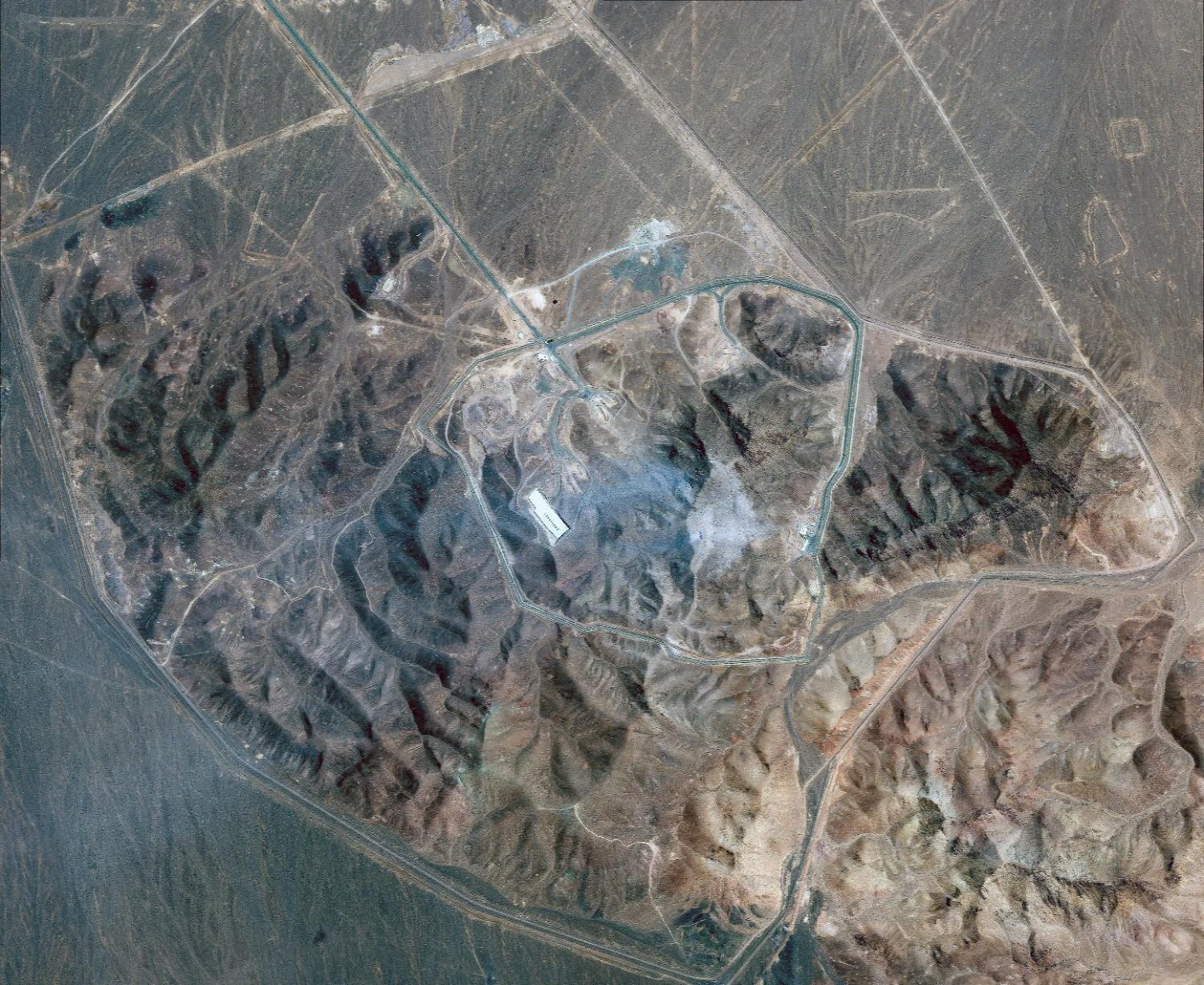
This satellite picture by Planet Labs PBC shows Iran's underground nuclear enrichment site at Fordo following U.S. airstrikes targeting the facility, on Sunday, June 22, 2025.
The United States is still assessing the full impact of its June 22 airstrikes on Iran’s nuclear facilities, with senior officials warning that critical uncertainties remain despite claims of tactical success.
The operation involved B-2 stealth bombers deploying 14 Massive Ordnance Penetrators against Fordow and Natanz, while cruise missiles launched from a submarine targeted the Isfahan site, according to the U.S. media.
Washington believed that the strikes likely set back Iran’s nuclear program by several years, with President Donald Trump declaring that “Iran’s key nuclear enrichment facilities have been completely and totally obliterated.”
While U.S. officials hailed the strikes as a strategic success, key questions remain unresolved, particularly concerning enriched uranium stockpiles and environmental safety.
Iran has disputed the scale of the damage, claiming that sensitive materials, especially enriched uranium stored at Fordo, were relocated prior to the strikes.
U.S. General Dan Caine, the chairman of the Joint Chiefs of Staff, acknowledged that further technical assessments were necessary to determine the full extent of the damage.
Adding to the uncertainty is the fact that United Nations nuclear watchdog IAEA inspectors have not had access to Iran’s nuclear facilities since June 13, when Israel began its own air campaign.
“No one, including the IAEA, is currently in a position to have fully assessed the underground damage at Fordo,” IAEA Director General Rafael Grossi said during an emergency board meeting.
He added that given the size of the explosive payload and the sensitivity of the centrifuges, "very significant damage is expected."
One of the most pressing concerns is the fate of over 400 kilograms of uranium enriched up to 60 percent purity, stockpiled by Iran. This level is just below weapons-grade and experts warned that if such material survived the attacks, the nuclear threat would persist despite the structural damage.
Meanwhile, Iranian parliament is set to debate a legislation to suspend cooperation with the IAEA entirely, further obstructing international oversight.
Experts have also addressed public fears regarding potential nuclear fallout from the strikes. They stress that while Fordo was hit directly, a nuclear explosion was never likely.
The uranium at the site is stored in gas form (uranium hexafluoride), which cannot cause a chain reaction. Moreover, any leakage would likely remain localized due to the material’s density and volatility.
However, analysts warn that other Iranian nuclear facilities, such as the Bushehr nuclear plant and Tehran's research reactor, pose far greater radiological risks. A successful strike on these sites could lead to scenarios resembling Chernobyl or Fukushima, with large-scale environmental and human consequences.
Such facilities store various radioactive materials in solid, liquid, and gaseous forms. Missile strikes could damage containment systems, causing chemical and radiological leaks.
As Grossi noted, the knowledge and expertise Iran has developed over decades cannot be bombed away. Even if infrastructure has been destroyed, the path to reconstituting a nuclear program —albeit with great difficulty— remains open.
With negotiations on pause and tensions escalating, both military planners and nonproliferation experts agree: While the strikes may have delivered tactical gains, the strategic risks, nuclear and environmental ,remain far from resolved.